Welcome to Moda Fabrics!
Christmas in July ~ Embroidery
Christmas in July ~ Embroidery
There are quite a few stitchers and embroiderers at Moda.
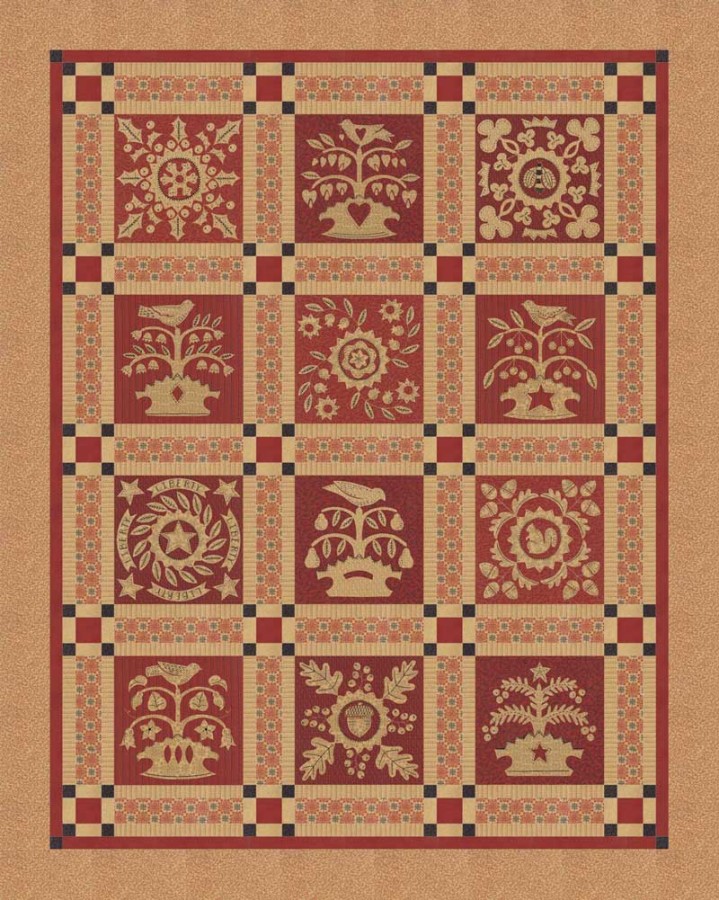
Kathy Schmitz - of course. This is her quilt - A Bountiful Year - it's made with her Count Your Blessings collection. She's written a slew of patterns and a couple of books filled with gorgeous embroidery and quilts.
Now that I think of it, there are several designers who regularly include embroidery in their quilts and projects, patterns and books. Brenda Riddle. Anne Sutton. Joanna Figueroa - Fig Tree & Co. Jen Kingwell. Lisa Bongean - Primitive Gatherings. Bonnie Olaveson - Bonnie & Camille. Corey Yoder. Kaari Meng - French General. Janet Clare. Laurie Simpson - Minick & Simpson.
Just to name a few. (I probably missed some too.)
There are also several terrific designers with patterns and projects featuring embroidery. Meg Hawkey of Crabapple Hill. Gail Pan. Robin Kingsley of Bird Brain Designs. Stacy West of Buttermilk Basin.
In fact, it was one of Stacy's patterns that got me thinking about Christmas embroidery - A Very Vintage Christmas.
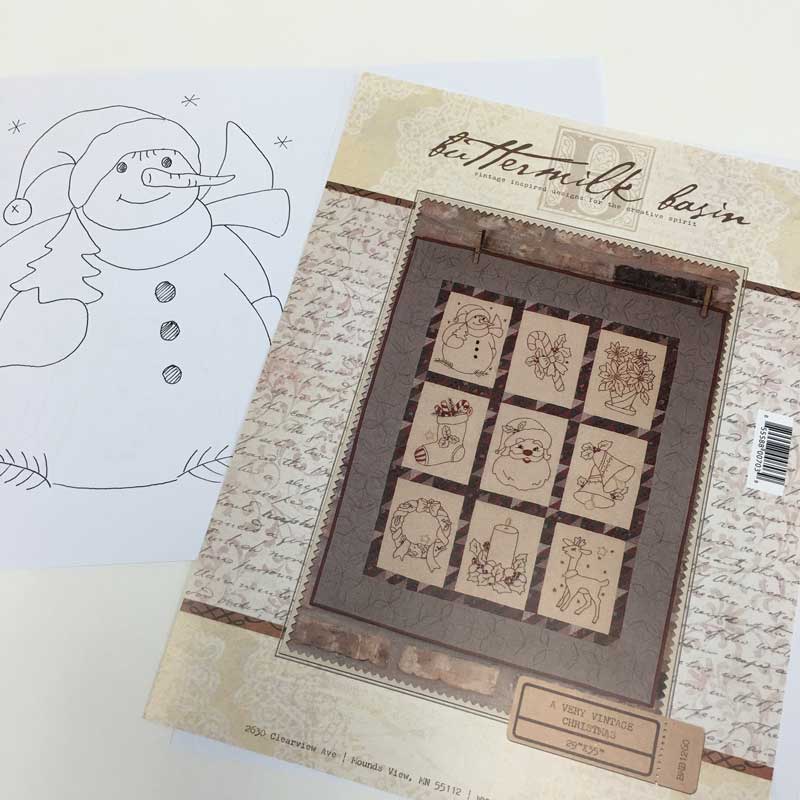
There are nine blocks stitched in Redwork - not so many that this couldn't be finished before Christmas. With the pieced sashing and border, this finishes at 29" x 35". But the blocks would be lovely as small pillows or framed.
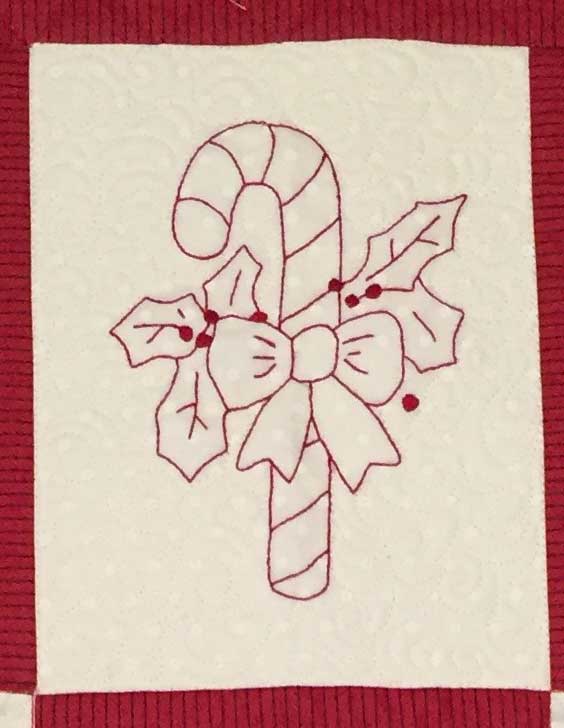
In the interest of full disclosure, I didn't do this embroidery. It was stitched by Darlene Johannis, a sweet friend and uber-embroiderer. I may have whined, pleaded and begged just a bit. Not really. She loves to stitch and she does it beautifully. I just had to send her the pattern and fabric, she'd take care of the rest. Of course, then she had to put up with 284 questions about what products she uses, her process, any tricks or tips, etc.
Let's start with the fabric.
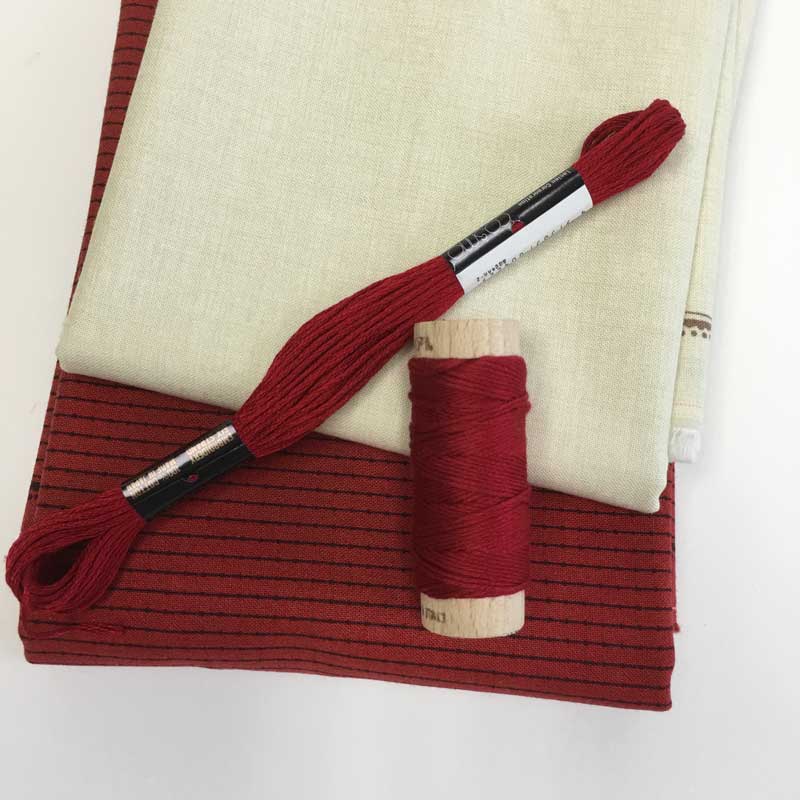
I chose the red print first - this lovely little stripe from Madame Rouge by French General. For the background, I couldn't decide whether to use the Linen-like print from the same collection or something else. We went with something else - the cream-on-cream polka dot from Spooky Delights by Bunny Hill - which of course doesn't show up at all in the photos.
Fabric for Embroidery. I know from my own experience and the expertise of others that Bella Solids are excellent backgrounds for embroidery. They have a tight-weave, fine threads and the "hand" is beautiful - the fabric feels really nice.
After choosing the fabric, I matched the embroidery floss as closely as possible. That's somewhat a personal preference - I like it when the red floss blends nicely with the fabric.
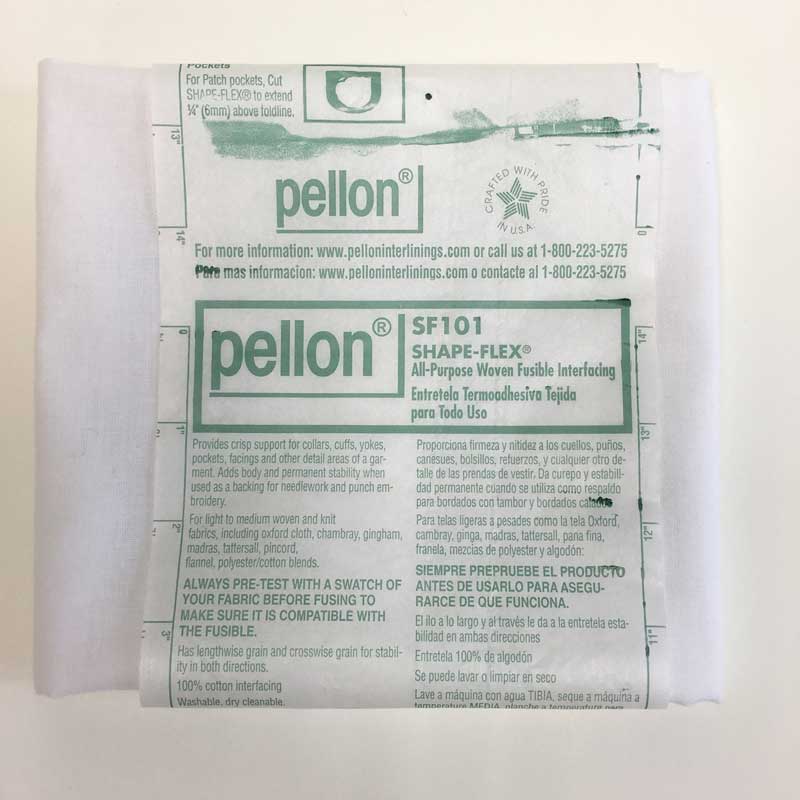
Interfacing or stabilizer. The most popular is Pellon SF101. This isn't required but it is widely used by embroidery aficionados and experts - Darlene uses it. While it gives the fabric some body - stiffness - the biggest benefit is that it minimizes or eliminates shadowing of threads to the front of the finished embroidery. I know, you would never do a long carryover but sometimes, there are little tails and threads that just won't stay neat and tidy on the back of your work.
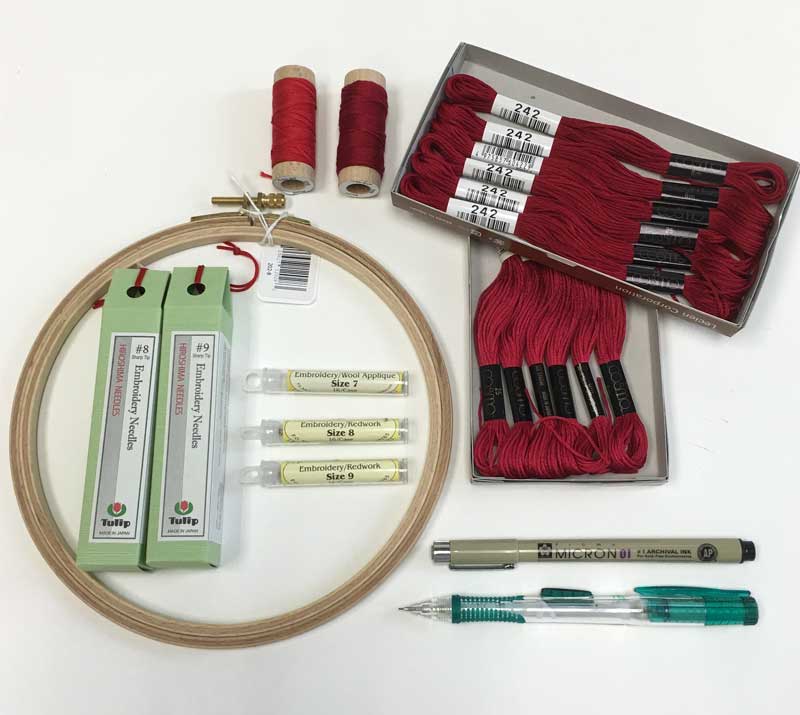
Embroidery Hoops. Personal preference - some people love them, others wouldn't use them if their life depended on it. There are several different kinds but smaller is usually better because it's easier to handle. Meg Hawkey prefers a 5" hoop and Darlene agrees - she's never used anything larger than 6".
Me? I have all sorts of sizes and types. (And I still had a friend stitch the quilt... that should tell you something.)
Threads - Floss. Aside from using good embroidery floss, this is also personal preference because of subtle color variations, some have more of a sheen, etc. Six-strands - most stitching is done with two-strands. It's good to learn how to "strand" the thread properly - meaning, without making a big knot.
Our favorites are Lecien Cosmo and Aurifloss - from the folks at Aurifil.
Marking Tools. Everybody has an opinion here too - a very, very fine-pointed permanent pen, a mechanical pencil or some other kind of marking tool. The advantage of the Micron pen is that it's very fine and the ink won't run or smudge. It's also permanent. Make a mistake in tracing and you have to start over. The advantage of a pencil - mechanical or wood No. 2 - is that it can be erased. But the line might not be as thin as an 01 Micron.
Needles. Size and manufacturer, the most important factor here is what you feel comfortable stitching with. While there are specific embroidery needles with a larger eye and longer length - two of our favorites are from Tulip-Hiroshima and Jeana Kimball's Foxglove Cottage.
Sharps are also popular because they can be easier to control because they're shorter and have a sharper point. The biggest drawback for many with Sharps is that the eye of the needle is smaller, making threading a bit more of a challenge.
We decided to leave out the half-triangle squares and use a plain sashing and border to give the quilt a very old-fashioned look.
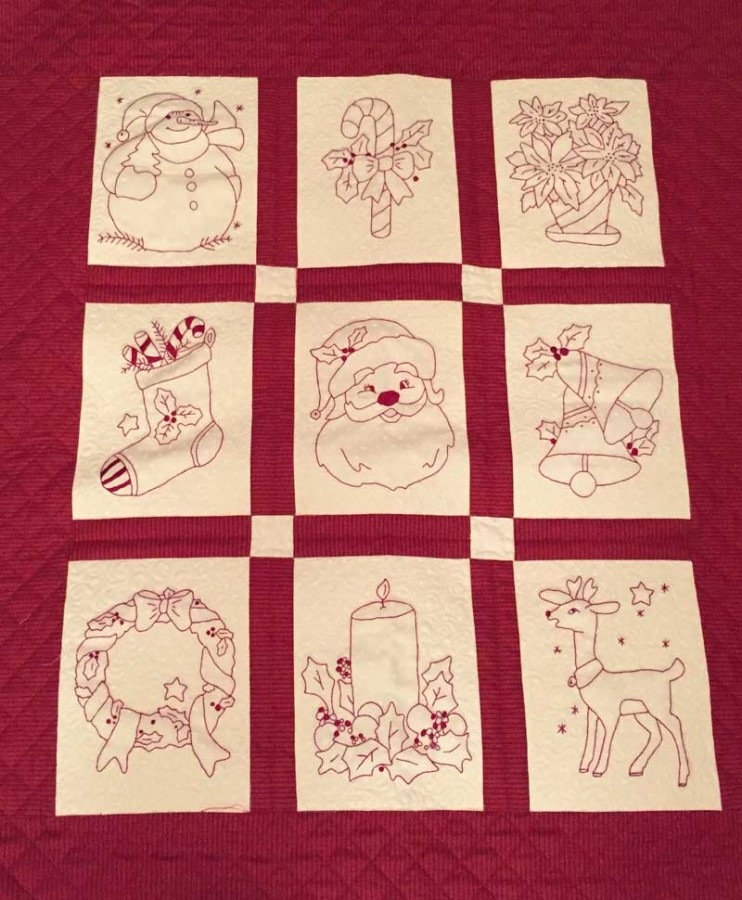
For basic information, stitches and projects, there are all sorts of books and magazines.
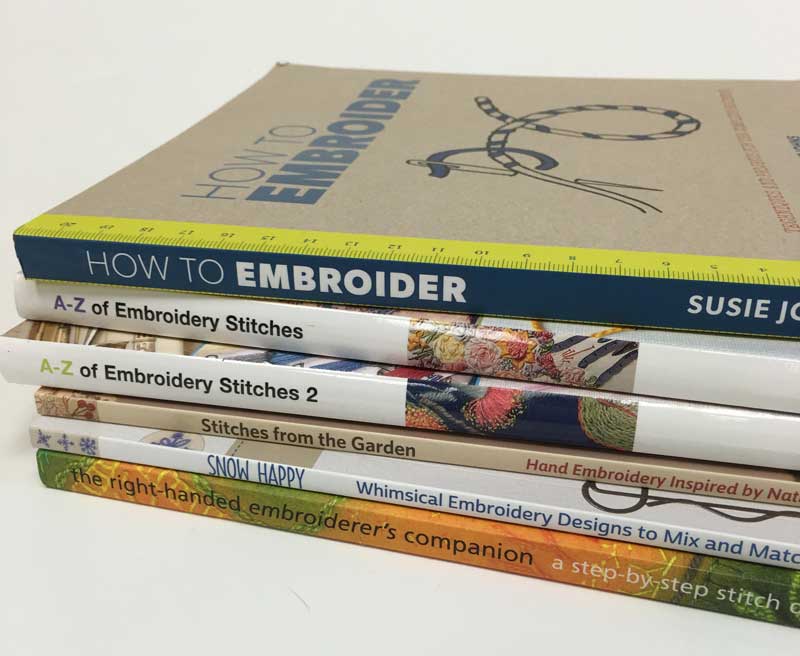
Books. While I would have loved to get a copy of every embroidery book stocked in the United Notions warehouse, it's been way to hot to carry that many books across the parking lot.
So here are a couple of favorites - not all are pictured:
- How to Embroider by Susie Johns - Taunton Press
- A-Z of Embroidery Stitches from Search Press
- A-Z of Embroidery Stitches 2 from Search Press
- Stitches from the Garden by Kathy Schmitz - Martingale
- Snow Happy by Robin Kingsley - Martingale
- Patchwork Loves Embroidery by Gail Pan - Martingale
- The Embroidery Book by Christen Brown - C&T Publishing
- Pen to Thread by Sarah Watson - Interweave.
- The Right-Handed Embroider's Companion by Yvette Stanton - this is a stitch-guide by an award-winning Australian embroiderer and stitcher. Unfortunately, this book is out-of-print and hard to find. But if you see it - or the Left-Handed Embroiderer's Companion, get it. It's excellent.
That's it for today.
Thank you again to Darlene for stitching A Very Vintage Christmas.
I get to keep it, right?

Comments